How do I know if my blood glucose meter is accurate?
Accurate measurement of blood glucose is particularly important for us to understand the level and control of blood glucose, especially for diabetic patients, the accurate measurement of blood glucose is related to the adjustment of treatment, which requires special attention. At present, blood glucose meters are becoming more and more popular, and most diabetic patients have blood glucose meters at home, which also provides a great convenience for us to understand the effect of drug treatment. We today to understand the use of blood glucose meter related knowledge.
We should buy qualified blood glucose meters produced by regular manufacturers, and it is best to buy them in brick-and-mortar stores, and online shopping is not recommended to avoid difficulties in after-sale maintenance. The blood glucose meter can be calibrated at the medical equipment store where it is purchased or at a larger pharmacy (mainly measuring the standard concentration of blood glucose calibration solution for judgment), or it can be calibrated at the endocrine and other specialties in the hospital (mainly comparing with the venous plasma blood glucose, the error should be within 20%, preferably within 10%). Of course, if we have our own standard blood glucose calibration solution, we can also measure it ourselves and compare it with our own fingertip blood glucose.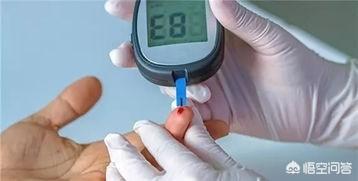
Before we use the blood glucose meter, we suggest to learn the operation from the professional people to understand the correct way to use it and to use the matching test strips; at the same time, we should pay attention to the storage of the meter and the blood glucose test strips, to avoid moisture, touching and dropping, and so on. In our daily life, we need to calibrate the blood glucose meter mainly in the following situations: the first time to use the newly purchased blood glucose meter, using new blood glucose test strips, feeling that the test result does not match with our condition (e.g., symptoms of hypoglycemia, such as cold sweat, etc., but the blood glucose still shows a high level), and after the meter has been bumped and dropped, and so on.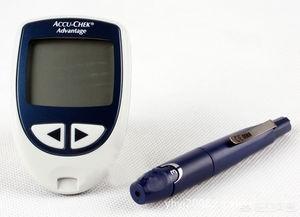
The calibration of the blood glucose meter is very simple, and if you have any problems in the process of using it, you can consult a professional doctor or the store or manufacturer where you bought the instrument in time. Of course, the value of blood glucose meter can only be used as a reference, and cannot be used to diagnose diabetes. The diagnosis of diabetes is still based on venous plasma glucose, the reason is that there is a difference between venous glucose and fingertip glucose itself, but as long as this difference is within 20%, it is acceptable, and shows that the blood glucose meter is reliable.
Thanks for reading and good health to all. This article was originally written by General Practice Sweeper on Today's Headlines & Wukong Q&A. Copyright © All rights reserved, reprinted must indicate the source.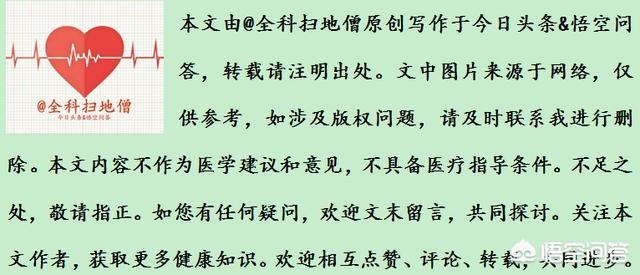
I'm glad to answer your question. I believe that many sugar users have the experience of taking different blood glucose meters to measure the same drop of blood, but the blood glucose values are different, and even sometimes the data difference is quite big. So the sugar users are worried, why the blood glucose value is different, is the blood glucose meter is not allowed?
This is because blood glucose meters themselves have a margin of error that is allowed to exist and may vary from meter to meter. And there are many factors that affect blood glucose, such as medication, diet, exercise, and even mood and temperature can affect blood glucose values. This, coupled with different practices when taking blood glucose measurements, can also lead to different blood glucose values.
The important thing to tell here is not to compare the values measured between different blood glucose meters with each other; such comparisons are meaningless. ToThe easiest and most effective way to know which glucose meter is accurate is to bring your glucose meter and compare it to the biochemistry test at the hospital. Comparing blood glucose meters to each other, you can never truly know which one is really accurate!
In addition, in the process of using the blood glucose meter, we also need to pay attention to some matters, only know how to maintain the blood glucose meter, in order to make the value measured by the blood glucose meter more accurate. Generally speaking, the blood glucose meter should be kept at a temperature of about 5-50℃, too cold or too hot will affect its accuracy. Different brands of blood glucose meters may have slightly different storage temperatures, so it is recommended that glucose users read the instruction manual carefully.
It should also be noted that the blood glucose meter should not be placed in a place accessible to children to prevent them from playing and bumping. Sugar lovers should also avoid dropping, bumping, hitting and other damaging behaviors during use, so as not to affect the degree or even damage the blood glucose meter. Of course, blood glucose meters also need to be cleaned regularly to prevent them from being contaminated by dust or blood.
The last thing to say about the correction of blood glucose meter is that if sugar lovers suspect that there is something wrong with their blood glucose meter or test strips, and the measured value is not accurate, then they need to have their blood glucose meter corrected. Offline purchases can be sent back to the store for correction, while online purchases can be sent back to the correction office.
Sugar man health network, a temperature control of sugar platform, welcome to pay attention to the questions and answers!
For diabetic patients, blood glucose meter is necessary at home, can be used to understand their blood glucose control at any time. But many diabetic patients in the process of using blood glucose meter, often encounter such things, is within a minute to measure the results of the two times will be different, is it not allowed to blood glucose meter? How can we know if the meter is accurate or not? Here we will talk about this issue of concern.
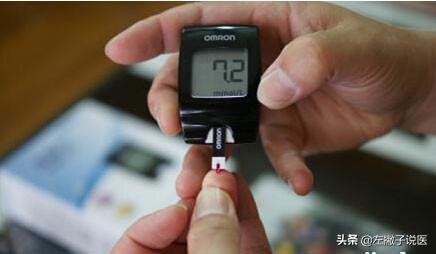
First of all, if we buy a blood glucose meter from a regular manufacturer, and it's a big brand of blood glucose meter, and if we follow the correct procedure for blood glucose testing, then the results are generally correct, and we don't have to worry about it too much. And most importantly, blood glucose meters purchased from regular manufacturers are generally calibrated at the factory before leaving the factory, and the results are more guaranteed.
Why are the results different? This is because the blood glucose meter itself has a margin of error, as long as within this margin of error, then even if the results of the two measurements are different, then both results are correct. The error range of blood glucose meter is generally required to be within 20%, preferably around 10%, which is allowed by the national standard. If the results of two measurements are more than 20%, then it means that it is out of control and the results are inaccurate.
For example, if our first blood glucose measurement is 8.0 mmol/L, the second measurement is accurate as long as the resultant value is in the range of 6.4 to 9.6 mmol/L.
If you suspect a problem with your glucose meter, you can go to the manufacturer for calibration, or you can take your glucose meter to the hospital for comparison to see if the results are within the allowable margin of error. After all, hospital blood glucose meters are often calibrated and the results are more accurate. By comparing the results with the hospital's glucose meter, you will know whether the meter is accurate or not.
● Secondly, finger-prick glucose testing at home is just a reference to see how well you are controlling your blood glucose, it is not at all a diagnostic criterion for diabetes.
Moreover, when we measure blood glucose at home, what we measure will be affected by many factors, such as whether it is operated correctly, whether it has taken medication or not, and it is also related to factors such as diet, exercise and emotion, so the blood glucose value is not the same every time. If you find that the result is too high or too low when you check your blood glucose with a glucose meter and you do not feel any discomfort, you should suspect that there is a problem with the meter, and you should go to the hospital to collect blood from a vein to check your blood glucose.
Fingerstick blood glucose is explicitly not a diagnostic criterion for diabetes; it is only a reference for changes in blood glucose. If your blood glucose is too high or too low when you check it with a glucometer, or if it does not match how you feel, you should still go to the hospital for a venous blood test.
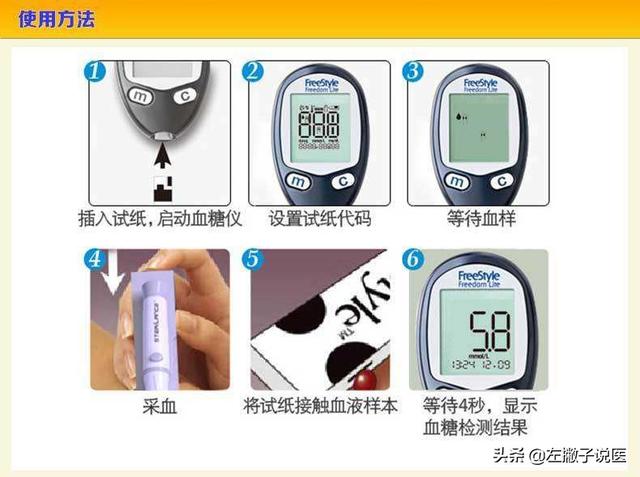
Finally, when measuring blood glucose at home with a blood glucose meter, the accuracy of the results is also related to whether the usual operation is standardized. Therefore, when we measure blood glucose, we must strictly follow the standard operation, but also to take care of the blood glucose meter, usually to avoid the blood glucose meter to appear violent shock, be careful and light to avoid the blood glucose meter soaked in water, in addition to the need for regular cleaning, so as to avoid the accumulation of dust and contamination by blood. In addition, it is also necessary to ensure that the blood glucose test paper is dry, to avoid moisture, which will affect the measurement results.
In general, if you suspect that the results of the blood glucose meter are inaccurate, one is to take it to the manufacturer for calibration, and the other is to take it to the hospital for comparison, and then modify the value. But in any case, the results of the blood glucose meter is only a reference, and can not be used as a diagnostic standard, for diabetic patients usually need to go to the hospital regularly for blood tests.

Author's note: I'm very happy to popularize health-related knowledge for everyone, I'm left-handed to say medical, every day in simple language for you to popularize professional medical knowledge, the code word is not easy, if you like my article, help me to point a praise! If you still have questions, you can leave a message in the comments section, welcome to pay attention to, forward, thank you for your support!
There are two things that diabetics worry about when measuring their blood glucose: the fluctuation of blood glucose (how can my blood glucose go up again?!) and the accuracy of the blood glucose meter (is my blood glucose accurate or not?!). The accuracy of the blood glucose meter (Is my blood glucose accurate or not?). Does it truly reflect your blood glucose level? Will it be on the low or high side?) (Will my blood glucose level be low or high?).So is it accurate to monitor your blood glucose at home with a glucose meter? What is the difference between the actual value and the measured value? Does the measured blood glucose value reflect the real situation at that time?You can actually choose and judge by.
1. Errors caused by the instrument itself The requirements for the accuracy of blood glucose meters are currently followed internationally by the ISO15197-2013 standard. It is required that the deviation between the whole blood results measured by the glucometer and the plasma results measured by the biochemistry meter from the same part of the patient's blood sample should be controlled within a certain range. In other words, at least 95% of the test results should meet the following conditions: when the blood glucose concentration is <5.6 mmol/L, it should be within the deviation range of ±0.83 mmol/L; when the blood glucose concentration is ≥5.6 mmol/L, it should be within the deviation range of ±15%.For example, when the blood glucose value is 3.9 mmol/L, the actual blood glucose value should be 3.9±0.83 mmol/L, i.e., 3.07 to 4.73 mmol/L.
2. Deviation caused by the specimen being tested (i.e. blood sample) First of all, let's talk about drugs and body interferences. When there are more acetaminophen, vitamin C, salicylic acid, uric acid, bilirubin, triglycerides and other substances in the body, it will cause fluctuations in blood glucose, which is manifested as a change in blood glucose value (i.e., "blood glucose meter does not measure correctly"). The second is the time the blood sample is left in place. At room temperature, the glucose in blood cells undergoes glycolysis, and the longer it sits, the more inaccurate the blood glucose meter will be. It is important to mention the difference between fingertip blood and venous blood. Usually blood glucose meters use capillary whole blood, while the laboratory tests venous serum or plasma glucose, using different methods of calibration of blood glucose meters, their detection of fasting blood glucose and postprandial blood glucose, there may be different errors or deviations.
3. The state of the diabetic patient will also affect the blood glucose value. Nervousness, excessive exercise, long-term sleep disorders, smoking and alcohol abuse, etc., can have a greater impact on the test results. It can be seen that the so-called "blood glucose meter is not accurate", may be because the instrument itself caused by the inaccuracy, more often because of our own reasons for the "inaccuracy".
It should also be pointed out that the use of blood glucose meter or operation is not standardized, error, can also lead to "inaccurate".
Hello, first of all thanks for the invitation!
Among my patients, especially those who have been ill for a long time, most of them have the consciousness to buy their own glucose meters for self-monitoring of blood glucose, and some of them also record their blood glucose monitoring results with a special record book, and patients who do a good job of self-monitoring (self-monitoring is one of the most important carriages in the treatment of diabetes) tend to have good control of their blood glucose levels, and a series of complications such as microvascular lesions, macrovascular lesions, neuropathy, etc. also occur relatively less or delayed. Patients who do a good job of self-monitoring (self-monitoring is one of the five carriages of diabetes treatment) tend to have good control of their blood glucose levels, and a series of complications such as diabetic microvascular lesions, macrovascular lesions, neuropathy, etc., occur relatively rarely or are delayed, which is crucial for sugar users;
However, most of these patients do not realize the need for self-monitoring of their blood glucose duringPerform blood glucose meter calibrationThis is an important aspect of glucose monitoring, which can lead to inaccurate glucose monitoring results and influence the judgment of the specialist.
How to calibrate a glucose meter ?
Generally speaking, medical equipment or regular pharmacies that sell blood glucose meters will have the necessary calibrations for the meter.Analog blood glucose solutionIf the value is known (set) and the results of the meter are compared with the known results when analog glucose solution is used in place of finger-priming blood or venous blood, the results are considered reliable if they fall within the range, and if they do not fall within the range, the cause needs to be identified and corrected.
Our department recommends that the patient bring his/her own blood glucose meter to the hospital to compare it with the department's blood glucose meter (the department's blood glucose meter is usually calibrated with the venous blood in 2-3 months, and corrected if there is a large difference), and if the difference is within 20% it is considered to be credible;
Of course, a more accurate method would be to take 1 drop of that patient's venous blood when it is drawn and test it with his/her blood glucose meter, as well as send it to the Laboratory for biochemical testing and comparison.
I hope that my answer is helpful to you!
I'm a dietitian and a junior internist.
[Welcome to follow, forward, leave a message to discuss]
[I am not well educated, so I hope to be criticized and corrected if there are inadequacies.]
Often at home blood glucose meter to monitor blood sugar whether you also have this confusion. Blood glucose monitoring is very important for diabetics, if the blood glucose meter is not accurate, then it may lead to blood glucose fluctuations are not grasped, which leads to some difficult to be controlled diabetic metabolic disorders of the problem of the body's health is still a great impact. Therefore the accuracy of the blood glucose meter is very important, so how can we know whether our blood glucose meter is accurate? Today to talk to you.
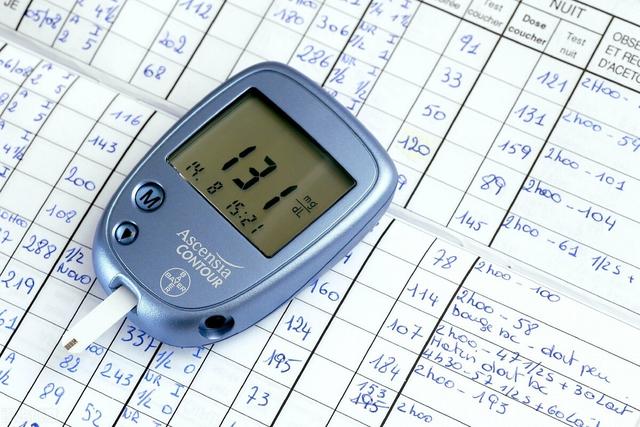
Purchase channel formal is to ensure the safe use of blood glucose meter prerequisite
Currently there are many channels for purchasing goods, including brick-and-mortar stores or online shopping and other ways. For electronic products I personally recommend that the first purchase when choosing a brand, so that the quality is relatively guaranteed, even if the maintenance will be more convenient. The second is to pay attention to after-sales service is convenient, of course, I such as you choose a good brand after-sales service is naturally no worries, of course, I you can choose to buy the physical store, after-sales repair and maintenance will be much more convenient. If there are questions directly to the store to find the store can help you deal with. The third blood glucose meter is a consumable product, that is, test strips, in order to ensure the normal use of the machine and the accuracy of the measurement results should be selected to support the test strips. Fourthly, avoid the blood glucose meter to be damaged, generally is the fall, or because of other reasons caused by the machine damage problems.
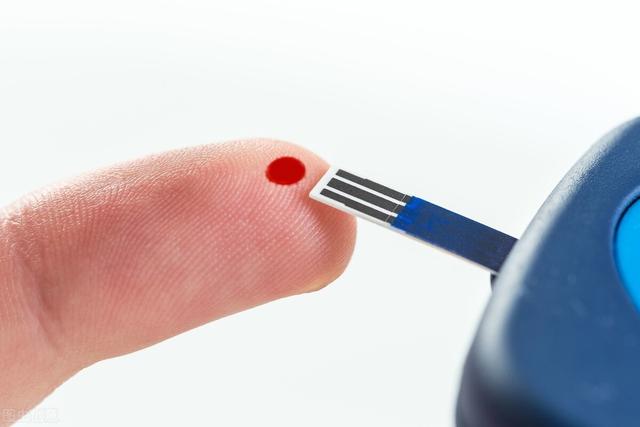
Of course what the above boils down to is that you should pick a brand and preferably buy it from a brick and mortar store. This way you will be more assured afterwards, for example if you suspect that your glucose meter is not accurate, you can just take it to a physical store for help.
What are some ways to know if your blood glucose meter is accurate?
If you monitor your blood glucose one day and find that it is very different from your normal blood glucose and recall that there is no trigger for the increase, or that it is very low. You are not experiencing any discomfort. Then you should doubt the accuracy of the blood glucose meter is reliable, and secondly you can try to measure the blood glucose value again, to rule out the error caused by the measurement method, if the result is very different from the previous one, then you can initially judge that there may be a problem with your blood glucose meter.
Of course if you have a hospital nearby or any organization that can monitor your blood glucose, you can ask them to measure your blood glucose once at the same time with your own blood glucose meter and theirs and compare the deviation values of your blood glucose. If the deviation is not much then it is accurate, if it is much then your blood glucose meter needs to be calibrated.
Use of Blood Glucose Meter
The blood glucose meter needs to be coded before use:
Code setting is the process of adjusting the blood glucose meter to match each batch of test strips. Glucose meter testing technology is mostly used glucose oxidase method, because there are differences in raw materials and production conditions (production temperature and air temperature, etc.), glucose oxidase test strips in the manufacturing process is not very good control of consistency, so that different batches of test strips on the difference in the reaction activity, so in the encapsulation should be screened before the detection of electrical characteristics of biochemical reaction is similar to a group of corresponding to a calibration code, so the different time production test strips calibration code are not the same, only the same batch of test strips are the same. Therefore, the calibration codes of test strips produced at different times are not the same, and only the calibration codes of test strips produced in the same batch are the same. Each calibration code of the blood glucose meter corresponds to a small set of program, users must use the calibration code of the blood glucose meter to get the correct result.
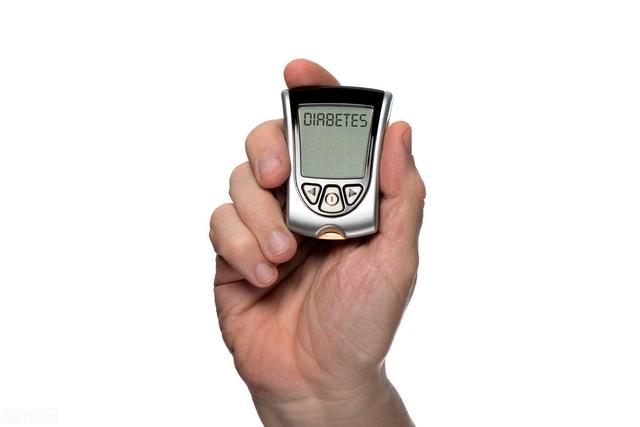
This can be an important part of causing problems with your blood glucose meter, so you need to adjust the code before using it. Barcode is inserted in the shutdown state of the new test strips, do not press the blood glucose meter buttons, until the machine appears password interface, check the password and the test strips on the bucket password is consistent, if not consistent on the M button for three seconds, when the screen when the password flashes, release your hand, and then move over the M button to change the password, select the same number with the test strips on the password, this is the method of adjusting the code la!
summarize
Blood glucose meters are mainly for monitoring blood glucose and cannot fully represent the results of blood glucose. If your blood glucose fluctuates abnormally, it is best to go to the nearest organization that can measure your blood glucose again according to the actual situation, and then judge the situation of the blood glucose meter again. Generally speaking, as long as you follow the measurement steps, pay attention to check the bar code when changing test strips, and pay attention to protect the blood glucose meter and save the test strips. As long as the blood glucose meter is quality-assured, there will not be any abnormality.
Thank you for reading, I hope my answer can be of some help to you, if you think it's not bad, please give me a like to show encouragement, if you can also give me a follow, I think it must be the biggest support for me! Thank you!
In fact, many diabetic patients do not know that blood glucose meters need to be calibrated, or some feel that the meter is not allowed to be replaced, but a good meter can be used for a long time as long as it is calibrated regularly.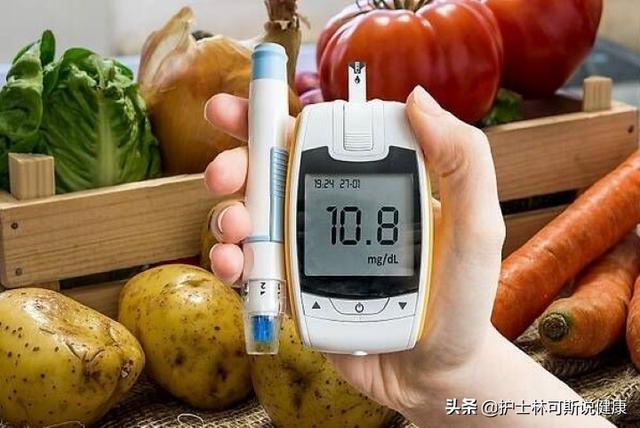
How often do glucose meters need to be calibrated
Blood glucose meter should be calibrated every six months to a year, clinical calibration can be used to measure the value and biochemistry of plasma glucose line comparison, if there is a big difference, more than 1-2mmol / L, this time the blood glucose meter needs to be calibrated.
What conditions require calibration of the blood glucose meter
1. Before using a newly purchased blood glucose meter for the first time.
2. Before each use of a new bottle of test strips.
3. When you suspect that there is a problem with the blood glucose meter, such as feeling dizzy and other symptoms of hypoglycemia, the blood glucose test results are high, or the blood glucose is significantly higher or lower than the usual normal level.
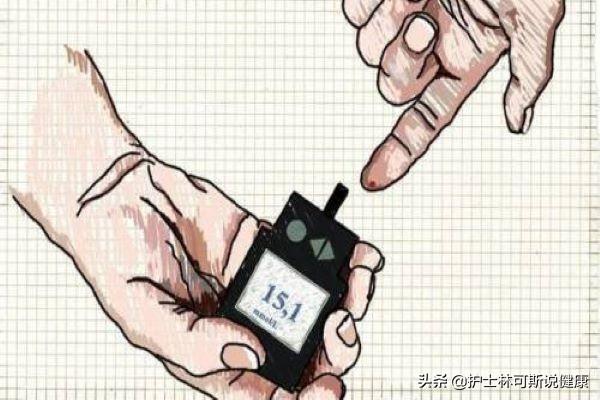
How do I calibrate my blood glucose meter?
The major manufacturers usually include a test solution and test strips, which can be calibrated according to the instructions. The best way to calibrate your glucose meter is to go to the store where you purchased it.
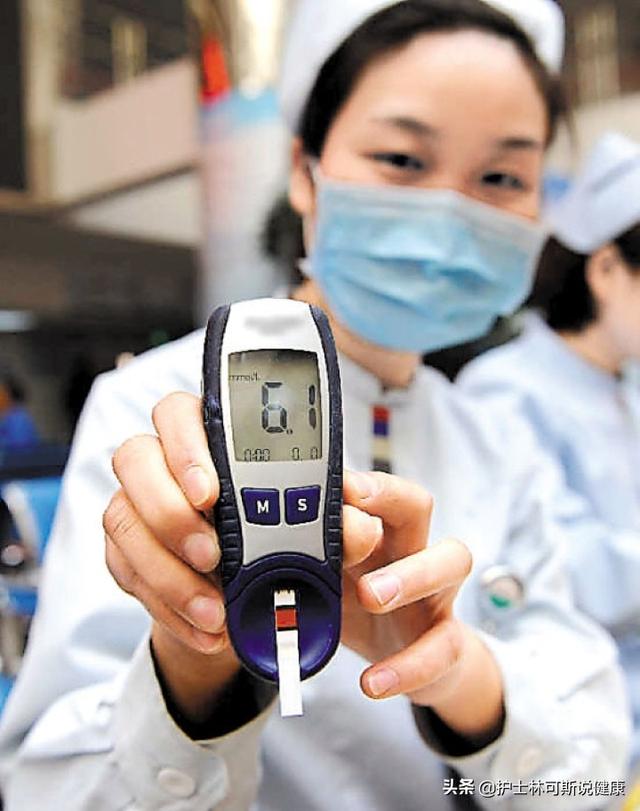
I'm @NurseLincosSpeakHealth , focusing on health dry goods, daily research on health and wellness, like my work welcome to pay more attention!
As a diabetic physician, I often hear the statement that the
Doctor, I've taken several blood glucose tests in a row within 1 minute and the results are different... is the glucose meter not allowed?
I have one drop of blood, and I've used several blood glucose meters to measure it, but they all have different results.
This brings us to the question, are blood glucose meters accurate or not?

Many diabetic friends have purchased their own glucose meters, which brings great convenience to checking blood glucose, but also brings troubles. I endured the pain of the needle, the results are accurate or not?
If you buy a qualified blood glucose meter from the right manufacturer and the procedure is correct, you should not worry too much.
The glucose meter itself has a margin of error
Blood glucose itself has a margin of error, which is allowed to exist and is also written in the blood glucose meter manual. Even different blood glucose meters may have different error ranges, errors of about 10% or even 20% are possible and are allowed by national standards.
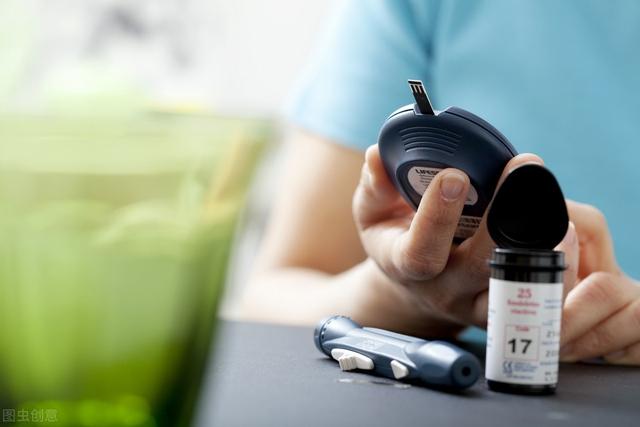
For example, if the blood glucose is 9.0 mmol/L, then a measurement of 8.1-9.9 mmol/L is possible. If the error is in the 20% range, then the range would be a little wider.
The finger-end blood glucose itself is a reference.
The value of fingerstick blood glucose is affected by many factors, such as medication, diet, exercise, mood, etc. There may be variations, which predispose the blood glucose will not be a fixed value, but varies within a certain range.
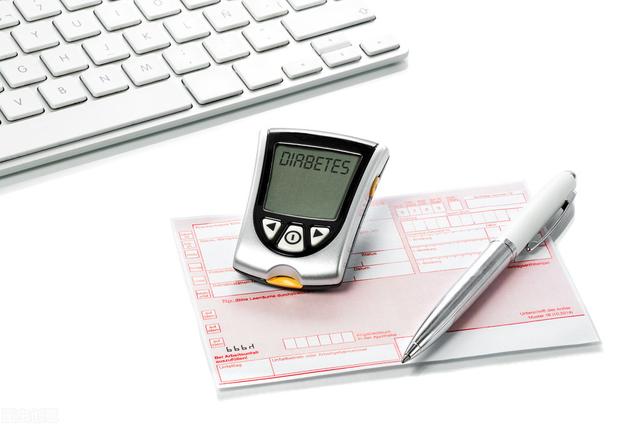
Fingerstick blood glucose is explicitly not a diagnostic criterion for diabetes; it is only a reference for changes in blood glucose. If your blood glucose is too high or too low when you check it with a glucometer, or if it does not match how you feel, you should still go to the hospital for a venous blood test.
Values between different glucose meters have no comparative value
If you feel or suspect that your glucose meter is inaccurate, do not compare between several glucose meters.
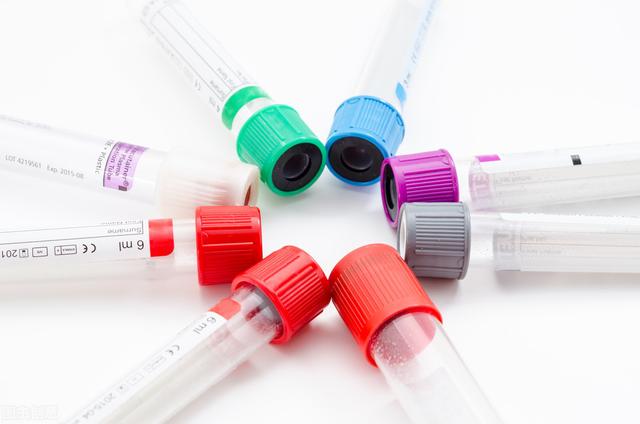
It is best to take it to the hospital and compare it with the hospital's biochemistry blood. You can also compare it with the standard calibration solution that comes with the blood glucose meter. But I think many home blood glucose meters do not have standard calibration solution.
Strict operation norms, love blood glucose meter
To make sure that the qualified blood glucose meter you buy is always accurate, you have to follow the operating instructions strictly.
Use test strips within the expiration date, do not operate at too high or too low a temperature, do not drop, touch, or immerse blood glucose in water, etc., and clean regularly to prevent dust and blood contamination.
I'm Dr. Sun. Follow Dr. Sun's sugar talk for continuous quality health knowledge!
How can I know if my blood glucose meter is accurate? This is a question that many people who are using blood glucose meters to measure blood glucose would like to ask. Today, Dr. Zhang will combine professional literature and his own clinical experience to tell you about this problem.
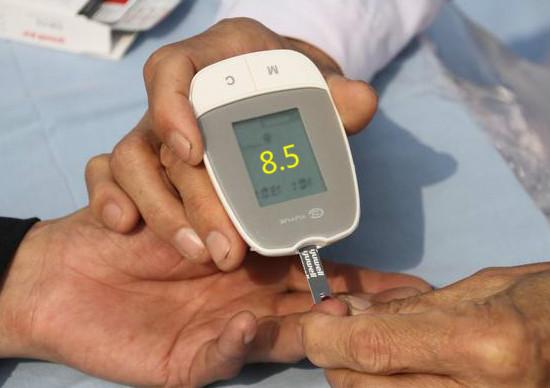
Glucose meters are not as easy to recognize as sphygmomanometers, which can be calibrated with a manual sphygmomanometer, but there is no calibration standard for glucose meters. In fact, it's not true that there is no calibration standard for blood glucose meters, but it's just a bit of a pain in the ass. The method I introduced to you is that if you want to calibrate the blood glucose meter, you can go to the hospital to draw blood for blood glucose measurement, after drawing blood, at the same time, their own blood glucose meter to measure the blood glucose level, and record it. When the data of blood glucose measurement from the hospital blood draw comes out, compare it and it will be clear whether the blood glucose meter is accurate or not.
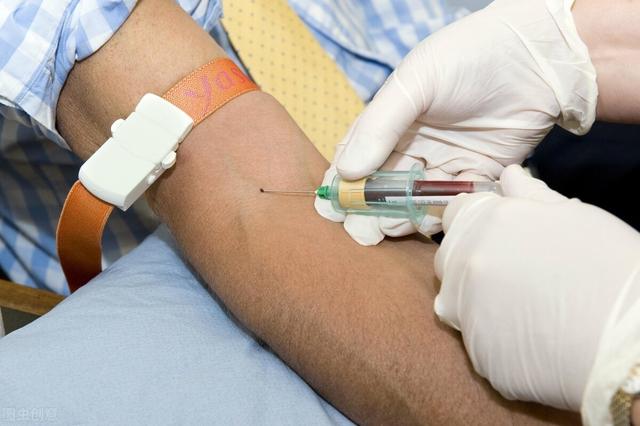
Take a blood glucose test yourself right after the blood draw and record it
So, the question that follows is, what is the difference between the blood glucose measured in the hospital and the self-tested blood glucose at home, and how much difference is considered appropriate? What is the difference between the blood glucose meter used at home and the blood glucose meter used at home?
Generally speaking, we have to look at the blood glucose data measured in the hospital in which range, if the blood glucose value measured in the hospital <5.6mmol / L, then the blood glucose meter used at home to measure the fluctuation range of blood glucose should be within ± 0.83mmol / L deviation is more appropriate, for example, a person measured in the hospital blood glucose is 5.0mmol / L, then the glucose meter to measure the blood glucose The blood glucose measured by the blood glucose meter should be between 4.2-5.8mmol/L even if it is accurate.
If your blood glucose measured in the hospital is ≥5.6 mmol/L, the glucose meter should measure blood glucose within ±15% deviation from normal. For example, if your blood glucose measured in the hospital is 9mmol/L, then the blood glucose measured by blood glucose meter should be between 7.6 and 10.3mmol/L, which is considered normal. If the deviation between the blood glucose measured by the glucose meter and the blood glucose measured in the hospital is too large, then it is still necessary to consider whether it is time to change the glucose meter.
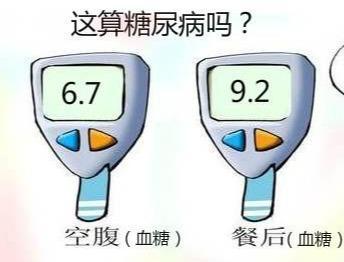
Lastly, I hope that I have been able to help more people with this article and that more people will benefit as a result. Thank you all.

You can take your glucose meter with you when you go to the hospital one morning to have your fasting blood sugar measured.
While your blood is being drawn at the hospital, take a fingertip blood with your blood glucose meter. As long as it's within the margin of error of your blood glucose meter, it's fine.
It needs to be emphasized:
In the definition of diagnosis, fasting blood glucose is defined as the time from bedtime to the next morning(say the) least8Haven't eaten any food for hours(other than water)And the blood glucose values measured.
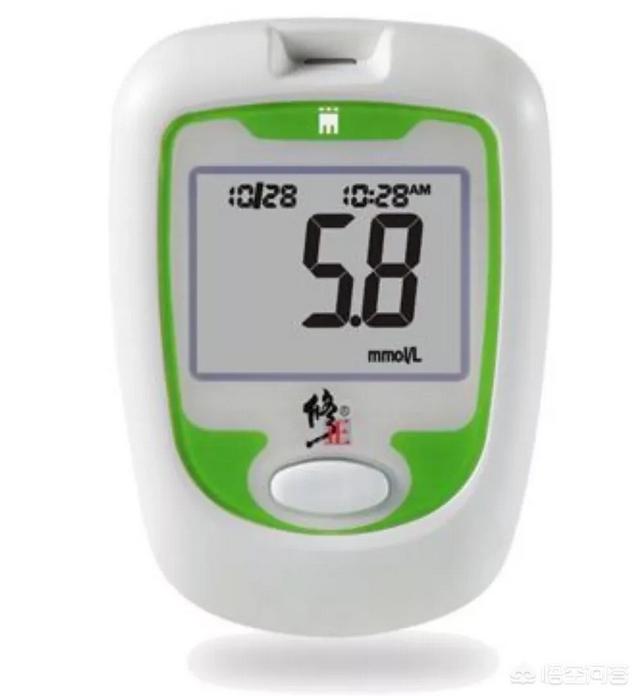
This question and answer are from the site users, does not represent the position of the site, such as infringement, please contact the administrator to delete.